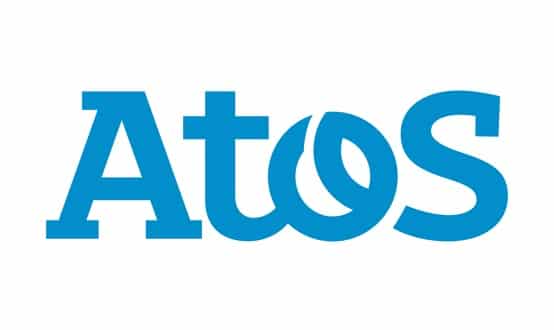It’s history (repeating itself)
- 25 June 2009
 |
|
The Gateway Reviews of the |
In response to a Freedom of Information Act request, the Office of Government Commerce and the Department of Health have published the Gateway Reviews of the National Programme for IT in the NHS conducted between 2002 and 2005. Lyn Whitfield took a look at them.
Following the twists and turns of the National Programme for IT in the NHS day to day, it’s easy to lose sight of just how very late it is running. Reading the early Gateway Reviews by the Office of Government Commerce brings this sharply into focus.
“Implement new NHS Care Record Service (Spine) systems by early 2005,” is one of the targets listed in a Gate 0 review completed in 2004. And this adds: “It is currently envisaged that the vast majority of the roll out of these systems will be completed by 2008 and be fully implemented by 2010.”
In other words, if the programme had stuck to its original deadline, E-Health Insider’s news pages would now be full of stories about those final, tricky deployments and speculation about future plans and developments.
Instead, of course, they are full of ‘final, final’ deadlines to try and get the programme’s remaining suppliers to deliver to one more trust (and in one case, one trust) by the end of the year, and of the near-demise of the NHS’ IT agency with most of its job left undone.
Way back when (2002)
Nobody could say that the gateway process failed to warn of trouble ahead. The first Gateway Review released onto the NHS Connecting for Health website dates from June 2002. It makes a ‘strategic assessment’ of the ‘strategic programme’ for IT drawn up in response to the NHS Plan and the Delivering 21st Century IT Support for the NHS white paper that followed it.
The review, which was conducted four months before Richard Granger arrived as director general of NHS IT, concludes that: “The time is clearly right for enhancing the IT capability of the NHS to help it deliver its challenging targets.
“The need for significant extra funding has been recognised. All the key stakeholders agree that a centrally managed approach is necessary, as long as it is combined effectively with locally controlled implementation. A broad understanding has been established on [what] the key building blocks of the programme are.”
However, the anonymous authors also warn: “The programme is a change programme first and foremost, albeit with significant IT elements. But the implications of this are not being pulled through into the way the programme is structured, into the level of engagement with stakeholders, or into detailed planning.”
Indeed, they say: “The people on the programme display a ‘head office’ mind set, with ‘great thoughts’ being developed at the centre and then disseminated. A successful programme does not work like this.” Instead, they added, it needed “to win hearts and minds.”
The men from the ministry (2004)
The OGC conducted a second Gate 0 review in November 2004. By this time, Granger was in place, the Treasury’s comprehensive spending review had decided to shower money on the NHS, the main outlines of the programme had been agreed and its national application service provider and local service provider contracts had been placed.
The reviewers were impressed – up to a point. “This Gate 0 review finds great contrast in the progress and achievement in meeting [the] twin challenges [of procurement and managing change],” they say.
“For procurement, the pace of progress has been unprecedented in the public sector [and] very taut ground-breaking contracts represent a major step forward… the suppliers are engaged and working hard and the pace of implementation will increase over coming months.”
However: “Bad experiences with current systems and earlier failures have led to suspicion and cynicism of the National Programme, which must be addressed. There is an urgent need to adopt a more open approach and to improve communication with the media and staff at all levels.”
The review also expressed concern about Granger’s “responsibility, ability and authority” to drive business change, and left the programme’s status at red (to achieve success, take action immediately).
A year later, the OGC conducted Gate 2 reviews of the procurement strategies for the programme’s key elements, including the national broadband network, N3, and what was then called the NHS Integrated Care Records Service, for which a preliminary Output Based Specification had been issued.
Predictably, it found there was “widespread support for the aims and objectives of the ICRS” but that it was being viewed as an IT programme and not a change programme, and that stakeholder engagement and a benefits realisation strategy were still missing.
“The programme has a very aggressive timescale, which is positive in terms of driving it forward, but it brings risks that have to be managed; there appears to be no contingency plan,” reported the reviewers, who nevertheless gave NHS ICRS an amber light (go forward but carry out recommendations before the next review).
Stop me if you’ve heard this before (2004)
By 2004, the OGC was conducting Gate 3 reviews of the ‘implementation preparedness’ of the national programme’s five clusters. This came to a number of conclusions that were common to all of them.
Two of these were familiar: “Little progress has been made in establishing effective benefits realisation plans” and “stakeholder communications have lacked content and impact.” One was new: “The complexity of delivering legacy system upgrades has been underestimated.”
Specific issues also emerged. In London, the review found the implementation phase “is starting with several strongly positive winds behind it: clinical enthusiasm, a successful procurement phase and a strong and supportive programme board.”
But it also found the core cluster team was severely under strength and that the capital’s innovative ‘best practice boards’ were working to over-tight deadlines and with “unrealistic” assumptions of clinical engagement. It gave London a red light because of the sheer scale of the task ahead of it.
Also red-lighted was the South, where Fujitsu was still local service provider and working with IDX as its key system supplier. The South was closely linked to London, where BT was also due to install IDX.
Yet the South’s review reported “contractual misalignment” between the two companies, and a lack of governance and day to day working arrangements to address the problem, even though they needed to stay “exceptionally close… to keep the IDX product common.”
The review also noted that demand for new systems was likely to be high in the South, because of the “significant and urgent demand for replacement of obsolete or unmaintainable systems necessary to ensure service continuity.”
The Eastern and North Eastern clusters, which had Accenture as their LSP, and the North West and West Midlands, which had CSC as their LSP, were given amber lights.
Getting off track (2005)
The final round of Gate 4, readiness for service, reviews were conducted in summer 2005. By this time, the first of what had become known as NHS Care Records Systems should have been in place: but this was not happening.
“In overall terms, the delivery of CRS has been a major disappointment so far, due in the main to poor supplier performance, although satisfactory progress has been made on other elements of the overall NHS Connecting for Health programme,” reported the London review.
“At this time, no commercially supported and agreed plan for the delivery of CRS products to meet the urgent business needs of acute trusts. The LSP CRS product is as yet unproven, as its development will not be completed for 3-4 months. This represents a delay in the programme of some 12 months.
“The development phase has been further exacerbated by the considerable effort involved in endeavouring to develop the common solution with the Southern cluster. The Southern cluster’s decision to withdraw from this arrangement has created a sense of relief in London.”
Fujitsu dropped IDX in favour of Cerner Millennium in June 2005. BT eventually made a similar decision, but decided to develop its own version of Millennium for the capital.
(Deployments of the London Cluster Version 1 of Millennium have been on hold since last summer, following problems with the implementations at Bart’s and the London and the Royal Free Hospital trusts, although they are supposed to re-start this autumn).
The Eastern cluster review report was much more favourable, arguing that “relationships with Accenture appear proven and robust and capable of delivering future success” and that the programme was “on the verge of a wide-ranging deployment with the capability to improve fundamentally the delivery of healthcare to the local community.”
Ironically, Accenture pulled out of the programme in September 2006, after months of bad news about the progress of its key systems supplier, iSoft, and delays to its Lorenzo electronic patient record. (CSC now covers all three clusters, and Lorenzo is in limited use, most obviously on three wards at Furness General Hospital).
Publish and be damned
The OGC Gateway Reviews provide a wealth of information about the programme and, until they end in 2005, a useful chronicle of how and why it began to go off track. Many of the reviewers’ comments mirror criticisms that were made in the press or professional forums at the time, but which were brushed off as ill-informed or unhelpful by the programme and its leaders.
Significantly, no Gate 5 benefits realisation review has been run of any aspect of the programme: even though it is now four years since its different elements and clusters went through Gate 4. Since the problems that would plague NPfIT and stall its critical NHS CRS strand were so well documented in those and earlier reviews, it is unfortunate that the OGC did not publish its work at the time.
More than 30 Office of Government Commerce Gateway Reviews of the National Programme for IT in the NHS, its components and clusters were released onto the NHS Connecting for Health website in response to a Freedom of Information Act request. This is far more than E-Health Insider’s small team of reporters can work through. So we would like you, our readers, to help – and bring your knowledge and expertise to the process at the same time. Please visit the OGC Reviews section that we have set up in Opinion and Analysis, read a document – or two – and post a comment if there is anything in it that we or other readers should know about. Or just post a comment on things that strike you or might hold lessons for the present and future. We’ll report back on interesting findings. |





